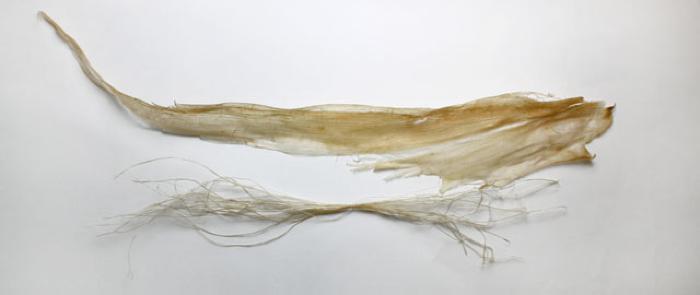Sinew — Qikarlluk

Sinew is a general term for the tough, fibrous, connective tissue found throughout an animal’s body. Tendons and ligaments are both sources of sinew. Tendons connect bones to muscle, while ligaments connect bone to bone.
Sinew is a valuable raw material. In addition to being very strong, it is durable. Moreover, when moistened, sinew creates its own natural glue. Then, when the material dries, it shrinks. As such, it is excellent for creating tight lashings.
Alutiiq people used sinew for many tasks. Seamstresses created sinew thread for stitching garments, tied strips of sinew together to make nets, and braided sinew into thick cords. Carvers used sinew to lash together the pieces of multi-part tools, including everything from harpoons and arrows to vests of armor.
One of the most important uses of sinew was in stringing and reinforcing bows. Many Alutiiq longbows and recurve bows feature a thick bundle of braided sinew strands running down the back of the bow, from nock to nock. This band strengthened the bow, preventing it from breaking during use. Some bows even had a carved channel to help hold the sinew band in place. Caribou sinew, from along the animal’s spine, was particularly valued for backing bows.
